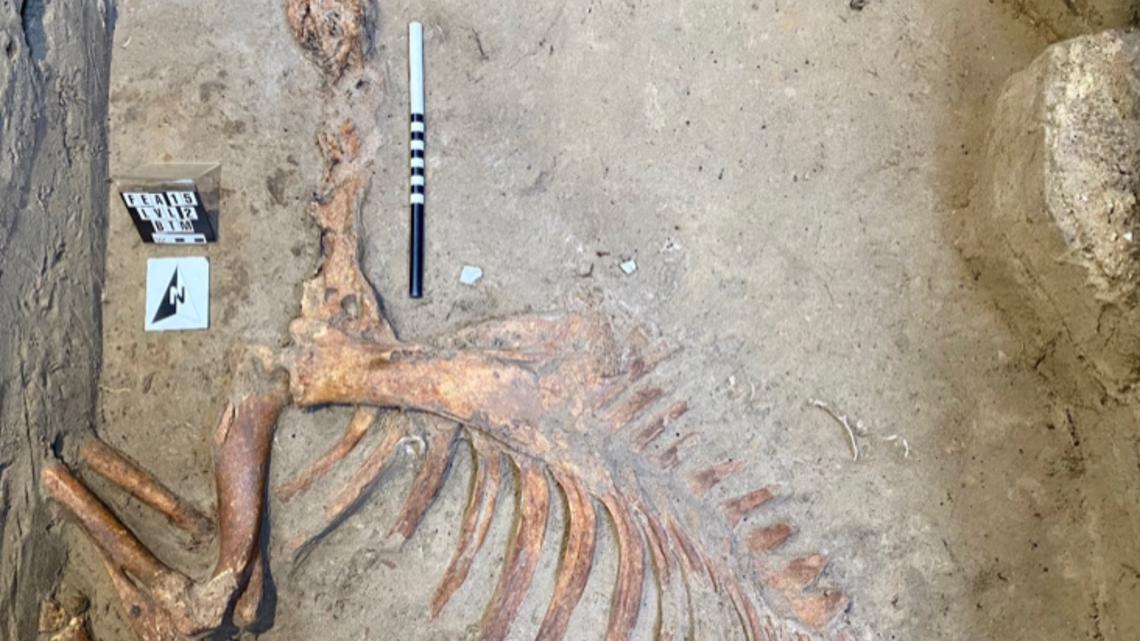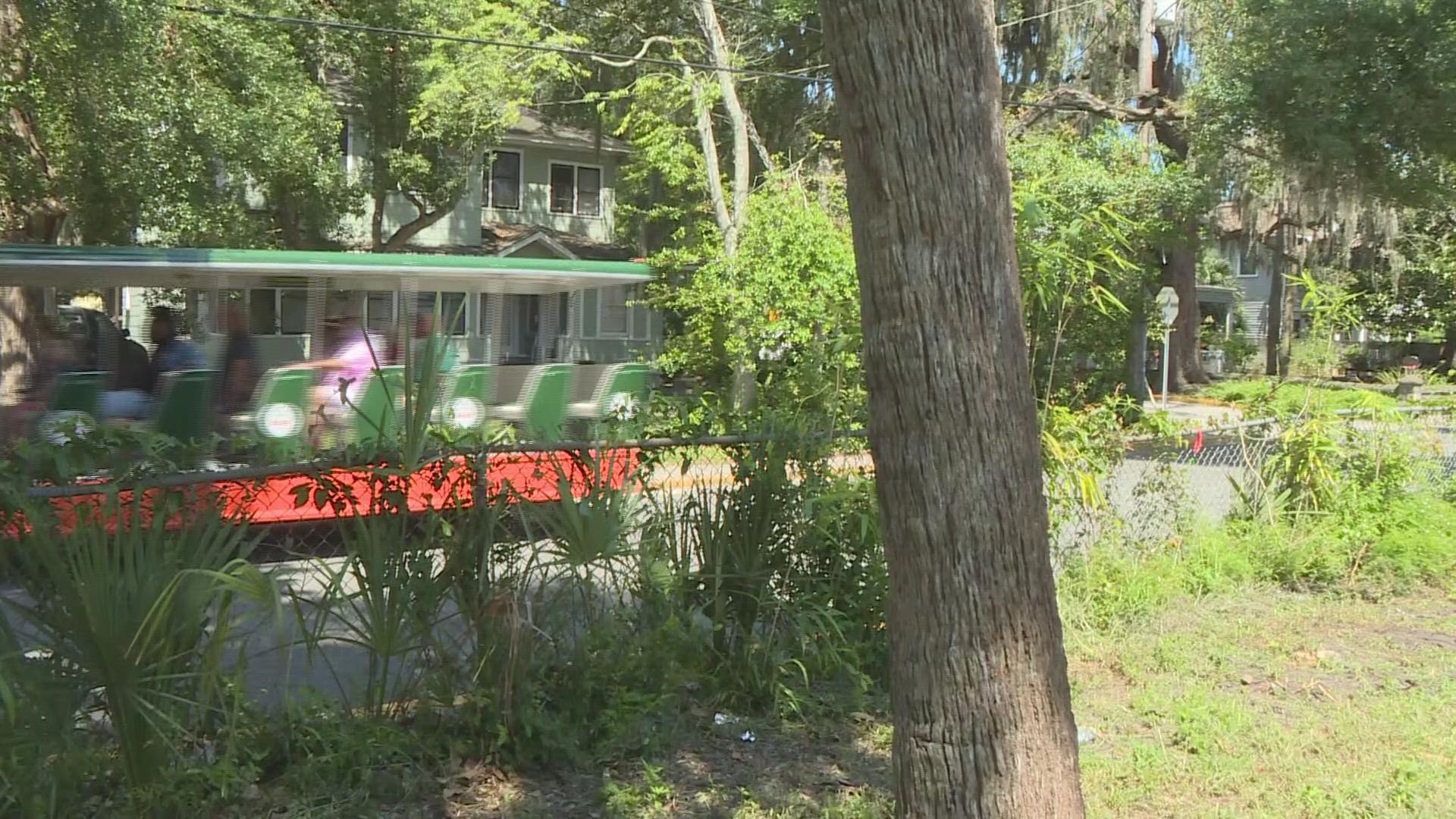ST. AUGUSTINE, Fla. — An archaeological bonanza is being unearthed in St. Augustine.
This dig is revealing that a Native American village could be bigger -- or at least in a different place -- than previously imagined.
That same site would later become one of the state’s first commercial orange groves.
Some people may be familiar with the site on Bridge Street, where an old blue house stands crumbling and vegetation has taken over.
However, in the last few months, the house has been sold and is being restored.
What most people these days don't see are the archaeologists on the site. They've been working in the backyard and even under the house.
"It's one of the first opportunities any archaeologists have had to work at this location," said Andrea White, St. Augustine City Archaeologist.
She and St. Augustine Research and Collections Archaeologist Katherine Sims, along with some archaeology volunteers, have been carefully studying the site.
The house restoration and archaeological dig are revealing some surprises.
One of those surprises is about the mission site of the Native American village called Palica.
"It was only mapped once," Sims said.
That was in the 1700s.
RELATED: Industrial warehouses bigger than the Avenues Mall proposed for farmland in St. Johns County
Later, archaeologists compiled maps and thought Palica was elsewhere in St. Augustine's Lincolnville neighborhood.
"When we started this project, we didn't anticipate finding deposits from Palica on this property," Sims said. "Once we started work, we immediately realized there is definitely Palica material here! Yes, it was a huge surprise."
Before the house was built, Native Americans lived here on a Catholic mission site in the early 1700s. Archaeologists have found pottery, but the big find was under the floor of the house where archaeologists found post holes.
Those are basically evidence of a Native American building, and that’s a big deal.
"These all date to Palica," White said. "We are 100 percent confident about the age of these. We’re really excited!"
Archaeologists believe the Palica mission was abandoned in the mid 1700s and 50 to 100 years later, the first part of this house was built. It was part of the Yallaha plantation which was one of Florida’s first commercial orange groves.
Some of the original structure is still part of the house. That original portion date to early 1800s. The house is being restored, but old parts are being salvaged such as roof shingles that are stamped "Florida" on the underside from the 1800s.
Because the house was built a couple of feet above the ground, the house became a protector of the archaeological artifacts in the ground.
"What’s great about a historic structure is that normally people don’t’ go built something under a house, so it helps preserve everything," White said.
That includes another surprise under the floor. Archaeologists found a donkey burial, estimated to be from the late 1700s before the house was built.


Laid with respect, not just tossed into the ground, it's easy to think the animal was possibly someone’s hard-working farm animal during the land's agricultural time period.
And so this house and this land are still relinquishing secrets about a story hundreds of years old.

